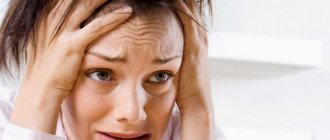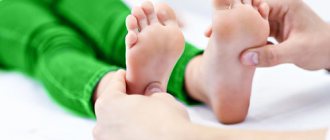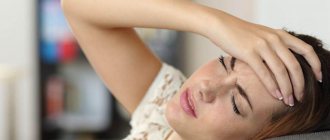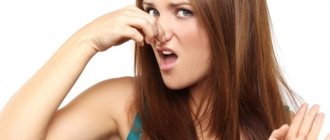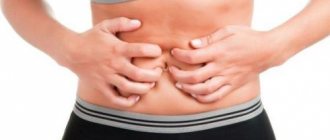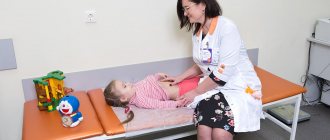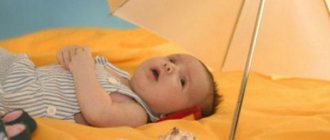Headaches in children and adolescents
Headaches are the most common complaint of people, forcing them to go to medical institutions; patients of childhood and adolescence are among them. According to statistics, approximately 3-8% of children complain of cephalgia in preschool age; in adolescence, this figure increases sharply to 57-82%.
A child is able to qualitatively evaluate and differentiate his sensations only at the age of approximately 4-5 years. It is by this time that he psychologically develops the ability to correctly perceive and describe the nature and location of pain. Earlier manifestations of pathology can be indirectly recognized by parents by the behavior, complaints and behavior of their children.
In most cases, attacks of cephalalgia in children have a favorable treatment prognosis, provided that the parents consult a doctor in a timely manner, the diagnosis is correctly established and appropriate therapy is prescribed.
On the one hand, intense vegetative symptoms (nausea, vomiting, dizziness, drowsiness, pallor, etc.) accompanying pain cause excessive concern for parents who seek to exclude severe head diseases (for example, brain tumor) and are overprotective of their children. On the other hand, there is an opinion that sometimes a child may have a headache and this is associated with adolescence and this situation does not require special attention and treatment.
Of course, complaints of headaches in “transitional” age indicate that in the process of age-related adjustment, the body and its functional-adaptive systems cannot cope with increased loads and signal this. Consequently, the child still needs immediate and qualified assistance from a specialist.
Frequent absences by a child from classes at school, sports clubs and restrictions on his active activities due to cephalgia leads to his falling behind the general education program and negatively affects his psychological and mental state, communication with peers.
At the same time, generally available preventive measures (regular and nutritious meals, walks in the fresh air, adequate physical activity, avoidance of overwork, overexcitement, lack of sleep, dehydration, etc.) in combination with proper drug therapy contribute to the treatment and prevention of certain forms of headaches.
Main types of cephalgia
In children and adolescents, just like in adults, headaches are divided into primary and secondary. Primary pain is an independent pathology not associated with any other disease. Secondary or symptomatic - are a consequence of somatic pathologies or underlying diseases of the central nervous system.
The most common primary cephalgia of the younger generation are migraines and tension headaches. Most often they are caused by hereditary factors, that is, they are present in the family history and have specific signs and complications unique to them.
Migraines are characterized by paroxysmal throbbing pain of severe intensity in one part of the head (bilateral pain is much less common). In most cases, there is an alternation of sides of localization of sensations. As a rule, attacks occur 1-2 times a month, less often - 3-4 times, with a duration of 30 minutes to several hours.
Pain can occur unexpectedly at any time of the day; left-sided migraines are more often observed in the morning. Attacks are accompanied by nausea, vomiting, dizziness, photosensitivity and noise sensitivity, vegetative symptoms (redness or pallor of the face, swelling of the eyelids, tearing, pupil dilation due to pathology, etc.).
Often, a painful attack is preceded by an aura in the form of dizziness or a sensation of rotation of the surrounding space, visual disturbances (flickering spots, light spots, blurred images), paresthesia, numbness of the head and/or face, and speech impairment. Physical activity increases discomfort and causes unbearable pain.
Tension headaches are characterized by a dull, pressing or squeezing sensation and are of moderate intensity. During the day, the nature of the pain and its intensity may change. The localization of cephalgia is bilateral, the frequency of attacks is noted from 1-3 times a week to daily. The duration of the attack varies from 30 minutes to several hours, days or even weeks with varying intensity.
Tension headaches usually occur in the afternoon, in schoolchildren after 5-6 lessons. Does not depend on physical activity, may be accompanied by dizziness, fatigue, depressed mood, anxiety, and nervousness. With increased pain, photo and sound phobia, anorexia are observed, and much less often - pallor, nausea, and vomiting.
The most common causes of secondary headaches in children are: sinusitis, middle ear infections, systemic infectious diseases, blood pressure disorders (hypertension or hypotension), traumatic brain injuries and other diseases. Sometimes there are cases of meningitis, encephalitis, the development of intracranial tumors of various etiologies, and even less often - the occurrence of cephalgia while taking certain medications that provoke vasodilation or vasoconstruction (expansion or narrowing of the lumen of the blood vessels of the brain).
Diagnostics
In addition to basic studies and analyzes that influence the choice of treatment and prevention tactics in children suffering from headaches, additional diagnostic examinations can be used.
Electroencephalography in children with the primary form of cephalgia is nonspecific. The study observed: a weakening of the severity of alpha rhythms in the occipital zone of the head and a decrease in the amplitudes of bioelectrical activity.
In some patients, the study reveals epileptic focal changes, both in a static state and during exercise. At the same time, the majority of children with benign epileptiform activity detected on electroencephalography do not have epileptic seizures, but complain of frequent episodic headaches.
In this case, drugs from the group of anticonvulsants can be considered as preventive measures.
Doppler ultrasound makes it possible to judge cerebral hemodynamics (blood movement through the vessels), including venous. It is the disturbances of venous blood flow that influence the nature and course of primary headaches. For example, significant venous dysfunction is found in approximately 87% of children suffering from migraines with aura.
For the prevention and treatment of such headaches, it is recommended to prescribe venotonic drugs.
A consultation with an ophthalmologist allows not only to determine visual acuity, but also to examine the condition of the fundus in order to exclude the diagnosis of intracranial hypertension.
Another cause of chronic persistent headaches in adolescents is visual impairment or improper correction. In this case, cephalalgia appears in the last lessons and the sensations are of a tightening or squeezing nature in the form of a hoop placed on the head.
The pain is localized, as a rule, in the frontal and temporal areas. This happens due to prolonged stay in an unnatural position (with the head lowered or thrown back) in combination with overstrain of the eye muscle fibers (squinting with myopia or farsightedness, astigmatism).
Adolescents and children with visual impairments can help get rid of headaches with well-chosen glasses and a well-lit and equipped workplace.
Factors that cause migraine attacks in children
Migraine is a chronic disease of the body characterized by periodically recurring attacks of intense cephalalgia.
In children of primary and preschool age, pain is bilateral; a unilateral pattern of pain is acquired in adolescence or young adulthood. At the same time, girls experience migraine attacks almost twice as often as boys. This is due to hormonal changes and in most cases, migraine attacks are triggered by menstrual cycles.
Factors (triggers) that provoke migraine in children:
Modifiable:
- Emotional stress:
- psychologically unfavorable situation in the family;
- conflict between parents;
- conflict between parents and child;
- worries and worries about grades or relationships at school;
- conflict with peers.
- Physical exercise:
- overwork;
- muscle overload;
- feeling hungry due to insufficient or irregular nutrition;
- dehydration.
- Rest and/or sleep disturbances:
- lack of sleep;
- sleeping too much on weekends.
- Climatic and external influences:
- heat, being in a stuffy room, cold;
- unpleasant odors;
- continuous noise;
- too bright light;
- vestibular loads.
- Eating disorders:
- excessive consumption of coffee, strong tea, carbonated drinks containing caffeine;
- frequent consumption of products containing artificial sweeteners (aspartame), nitrate preservatives (hot dogs, smoked meats, etc.), monosodium glutamate (used in large quantities in Chinese cuisine), tyramine or phenylethylamine (dark chocolate, cocoa, nuts, hard cheeses etc.);
- drinking alcohol, especially red wine and beer;
- eating large quantities of citrus fruits, bananas, avocados, raisins, prunes, etc.
Uninfluenced:
- External influences:
- sudden changes in weather conditions;
- sudden changes in climatic zones;
- unfavorable environmental conditions (radiation, air pollution with sulfur dioxide, nitrogen dioxide or carbon monoxide).
- Hormonal changes in the body (decrease in estrogen levels before menstruation in girls).
Of course, not every child is equally exposed to all of the above triggers, so parents are advised to keep a diary that will display the duration of attacks, their intensity, accompanying symptoms, food eaten the day before, psychological state (stress, conflict), etc.
Precursors of migraines in young children
Signs that your child may suffer from migraine attacks in the future include:
- Abdominal pain, which is characterized by repeated attacks of dull pain in the abdomen. Cutting or moderate aching pain occurs mainly around the navel, duration - from 1 to 72 hours. As a rule, abdominal pain is accompanied by anorexia, pale skin, nausea, vomiting, possibly diarrhea, a feeling of coldness or tingling in the fingers. In such a case, it is important to differentiate the diagnosis and exclude gastroenterological pathologies, infectious infection or an epileptic attack.
- Benign paroxysmal dizziness, characterized by repeated short-term (from several minutes to several hours), suddenly appearing and suddenly disappearing episodes of dizziness. In some cases, they are accompanied by nystagmus, vomiting, and throbbing headache. Moreover, in the period between attacks, studies of neurological abnormalities, vestibular functions and audiometry, electroencephalography data do not reveal pathologies.
- Cyclic vomiting syndrome is a condition in which a child experiences at least 5 discrete paroxysms of vomiting, each of which is accompanied by 4 episodes within one hour. The average duration of attacks is from 1 hour to 48 hours, the frequency is no more than 2 episodes per week. In the period between attacks (duration 2-4 weeks) there are no complaints about the child’s poor health. This condition can be combined with nausea, abdominal pain, headaches, discomfort during physical activity, and increased sensitivity to loud sounds and light.
Prevention of migraines in children
Preventive therapy for migraines in children begins with non-drug measures, which consist of:
- compliance with the daily routine;
- full sleep with going to bed at the same time, lasting at least 8-10 hours;
- nutritious and regular nutrition, sufficient amount of water (at least 1.5 liters);
- exclusion of physical and mental stress, stressful situations;
- training in relaxation and relaxation techniques;
- regular sports or physical exercise with moderate loads, but training during an attack increases the pain;
- avoiding foods that can cause an attack;
- avoiding long periods of time in front of a computer monitor or TV;
- formation of normal self-esteem in the child, despite the fact that he is tormented by headaches (so that the child does not feel sick, helpless and unable to lead a normal life);
- Keep a diary of the child’s well-being and pay attention if the headache is accompanied by anxiety, depressed mood, or, conversely, irritability and report this to the attending physician.
Treatment of migraines
Although preventative measures have shown good results in the treatment of migraines in children, most still require pharmacological therapy. It is mainly aimed at relieving headaches and eliminating symptomatic signs (regularly taking medications that reduce the frequency of attacks).
Symptomatic drug therapy is recommended for frequent, prolonged (3 or more days per month) and severe attacks, accompanied by significant impairment of well-being, health and limitation of daily physical activity.
Preventive symptomatic treatment is prescribed to children and adolescents during the interictal period with one of the drugs (depending on the individual characteristics of the disease) belonging to the following pharmacological groups:
- Beta blockers (Propranolol, Atenolol, Nadolol). The drugs act indiscriminately on adrenergic receptors, weakening the sympathetic impulses of the heart and lowering blood pressure. The drugs are not recommended for bronchial asthma; they can also cause side effects such as arterial hypotension, asthenia, sleep disturbances, and bradycardia. Not addictive.
- Calcium channel blockers (Verapamil, Nifedipine, Cinnarizine). The drugs have the ability to reduce the resistance of the walls of resistant vessels (arterioles) of the brain by reducing the tone of smooth muscles and reducing the response to vasoconstrictors (adrenaline), as well as prevent hypoxia of neurons, relieving neurogenic inflammation. Side effects of drugs (hypotension, bradycardia, dizziness, nausea, constipation) are observed quite rarely.
- Antihistamines (Peritol, Cyproheptadine) block H1 receptors and calcium channels, have anticholinergic and antiserotonin effects (reduce spasms). The drugs are recommended for children who have frequent migraine attacks combined with atopic dermatitis (allergies) or sinusitis. Medicines in this group can cause severe drowsiness, sedation, and weight gain.
- Antidepressants (Amitriptyline, Glycine) affect the metabolism of serotonin, norepinephrine, dopamine, and quickly relieve pain during migraines. Substances may cause side effects such as drowsiness, dizziness, dry mouth, memory impairment, speech impairment, and gastrointestinal dysfunction.
- Anticonvulsants (Valproate, Topiramate) affect nociception, reduce the activity of sodium ion channels (stabilize neuronal membranes) and modulate the activity of calcium ion channels, that is, they modulate neuronal excitability at the level of biochemical connections. The negative effect of the drugs affects the condition of the hair and epithelial tissues, the functionality of the digestive system, and sometimes provokes sedation and paresthesia.
Tension headaches in children
Due to the fact that tension headaches differ from migraines in their low intensity, not so severe accompanying symptoms and practically do not limit the daily activity of children, parents and patients themselves practically do not pay attention to them. Although, according to statistics, tension headaches are much more common in children than migraines. In early childhood, they are mainly episodic (less than 15 attacks per month are observed) and in adolescence they become chronic (more than 15 episodes per month).
Tension headaches are provoked by chronic psycho-emotional overload, stress, conflict situations that cause uncontrollable muscle spasms, blocks, clamps, tonic tension of the pericranial muscles (frontal, temporal, occipital). This is a kind of protective reaction of the body to the influence of constant external negative factors.
A similar reaction of the muscular system is caused by prolonged stay or work in a static, uncomfortable or non-physiological position, excessive overstrain of the neck, spinal, and eye muscles when working at a desk or computer, and an uncomfortable position during sleep. In most cases, there is a family history of similar cephalgia in the child’s parents or immediate relatives.
Typically, pain occurs in the morning after waking up and changes its nature, intensity and location (migrate from one side to the other or cover the forehead) during the day. They do not depend on daily and habitual physical activity, but react acutely to eye strain or mental fatigue.
Most children describe an undulating course of the attack with short moments of remission, the absence of transient neurological symptoms, but an increase in the level of anxiety, groundless fear, depressive states, and depressed mood.
Diagnostics
For tension headaches, its effectiveness was confirmed by an electromyographic study of biofeedback connections of the frontal muscle groups. Stressful situations or their threat cause an increase in muscle tone in the body and an increase in the electrical activity of muscle tissue, which is displayed on electromyography.
The person himself feels and is aware of only muscle tension during movements; other deviations remain below the threshold of perception. Familiarizing the patient with information about the electrical activity of certain muscle groups allows him to achieve greater results from relaxation, improve his psychological state and at the same time normalize blood pressure, respiratory and heart rhythms, and heart rate.
Therapy for such headaches should begin with reducing or eliminating the child’s exposure to a psycho-emotional or stressful situation. Tension cephalalgia does not completely deprive them of working capacity or physical activity, but causes them constant emotional discomfort, chronic fatigue, weakness, bad mood, which further aggravates the situation.
One of the main pathogenetic factors of tension headaches in children and adolescents is disturbances in the regulation of cerebral circulation. Doppler ultrasound helps to identify pathology and track the dynamics of changes in indicators during treatment.
Treatment and prevention of tension headaches
Prevention and treatment of tension cephalgia consists of a combination of drug therapy, which is aimed at correcting the mental and emotional state, eliminating muscle tension, as well as non-drug measures. These include physiotherapy, massages, baths, swimming, sports, optimization of the daily routine, good nutrition, arrangement of the workplace (desk, table, chair) and rest areas (orthopedic mattress, pillow), etc.
Medicines (painkillers) for episodic tension cephalgia are prescribed for a single dose or in short courses. Overusing analgesics in children and adolescents with chronic pain or mixing multiple types of drugs usually has the opposite effect. A similar result in combination with gastrointestinal dysfunction occurs when using stronger analgesics or their combinations with muscle relaxants (muscle relaxants).
For chronic tension pain, preventive therapy, which is carried out in the intervals between attacks, becomes much more important. For example, taking a course of Amitriptyline (an antidepressant with an analgesic effect), anticonvulsants, muscle relaxants to relieve muscle tension in the occipital and pericranial muscle groups.
Children suffering from tension headaches, as well as from migraines, often experience symptoms of cerebrasthenic syndrome, the main symptom of which is “irritable weakness.” On the one hand, such children are slow, passive, lethargic, quickly get tired and exhausted even with minor physical and mental stress, are constantly in a depressed mood and do not cope well with school memory tasks.
On the other hand, they experience increased irritability, affective outbursts, excessive criticism and a desire to constantly argue. In such a situation, the main thing for parents to remember is that their children are not lazy, stubborn, or have entered adolescence, but that they need medical help. Such children are contraindicated from excessive stress, prolonged stay in a group of peers, they need drug therapy and in no case should parents condemn them or scandals. From stressful situations in the family, headaches will torment the child much more often and more severely, and cerebrosthenic syndromes will worsen.
Another direction has confirmed its effectiveness in the treatment of tension headaches in children and adolescents - therapy with metabolic drugs.
They help improve metabolic processes in the brain, activate and increase the resistance of the central nervous system to various stresses, have anti-asthenic (asthenia - chronic fatigue syndrome) properties, and improve memory. Such drugs include: riboflavin (vitamin B2), coenzyme Q10, drugs containing magnesium, nootropic substances (for example, Actovegin). Author: K.M.N., Academician of the Russian Academy of Medical Sciences M.A. Bobyr
What to do if your child has a headache
First of all, you need to deal with the accompanying symptoms - fever, nausea, nasal congestion. Try to calm the child down, give him a warm drink, and put him to bed. Try to darken the room and keep it quiet.
Important: do not give any medications without a doctor’s prescription!
If a child has a headache in the forehead area, this may be due to the flu or ARVI. In this case, it is recommended to take the temperature and, if necessary, give an antipyretic.
If you experience frequent complaints, you should definitely consult a doctor. Cephalgia can conceal quite serious infectious, inflammatory or vascular diseases, the treatment and diagnosis of which should be handled by a pediatrician or neurologist.
Causes of meningitis
Meningitis can be of infectious or non-infectious origin. The infectious form of the disease develops as a result of the penetration of microorganisms into the body: bacteria, viruses, fungi and parasites. Non-infectious meningitis develops in patients as a result of taking certain medications and the formation of tumors.
Make an appointment
In medicine, classification is used according to the type of pathogenic microorganisms. It is important for a modern person to know how to recognize meningitis and what types of disease exist:
- bacterial meningitis is most often caused by streptococci, meningococci, pneumococci and Haemophilus influenzae, which are transmitted by airborne droplets;
- viral meningitis. The most common form of the disease. This type is characterized by the least severity. The causative agents of viral meningitis are enteroviruses;
- fungal meningitis develops as a result of the activity of certain types of fungal microorganisms;
- parasitic meningitis.
The list of therapeutic measures for meningitis is determined by the factors that caused the development of the disease. Thus, when treating bacterial meningitis, antibiotics are prescribed, which are ineffective for viral meningitis. If a person knows how to recognize meningitis, then the likelihood of diagnosing the disease at the initial stage and the effectiveness of therapeutic measures are high.
It is not possible to determine meningitis on your own. The clinical picture of the disease is varied. Signs differ according to the etiological factor. The initial symptoms of meningitis are often mistaken for cold symptoms. As the infection spreads, the condition worsens sharply. The high risk of death due to meningitis persists for 1-2 days from the onset of the first pathological symptoms. Delayed diagnosis and therapy lead to the development of severe, life-threatening complications.
How is meningitis treated?
At the Yusupov Hospital, patients can receive a full range of medical services for the detection and treatment of meningitis, rehabilitation after illness and prevention. Patients with meningitis can contact the neurologist clinic of the Yusupov Hospital every day for 24 hours to receive emergency care.
When patients are admitted to the Yusupov Hospital, a comprehensive diagnosis is carried out, including a number of examinations to identify the causes of meningitis, collection of complaints and symptoms. Patients with meningitis need inpatient treatment, so the Yusupov Hospital has created comfortable living conditions and ensures interaction with qualified personnel.
Where can I get help from a pediatrician in Saratov?
Frequent headaches in childhood can be a cause of pathology. In order to determine what exactly is happening to your child, you need to seek advice from a specialist. First of all, you need to make an appointment with your child to see a pediatrician.
The First Children's Medical Center offers assistance from highly qualified doctors working with children of all ages. Our Center provides everything for the comfort of children and parents. If you cannot visit a pediatrician (Saratov is not your city, and you cannot get to the Center) in person, then you can sign up for an online consultation with one of our specialists.
You can make an appointment for a consultation from 8.00 to 20.00 by calling (8452) 244-000. Reception is by appointment only.
First aid: advice from a pediatrician
- Put the patient to bed
- Eliminate TV and other external irritants
- Provide access to fresh air
- You can take a painkiller (check the dosage with your doctor)
There are many varieties and forms of this pathology in children. Only a doctor can identify the cause after a thorough examination. To clarify the diagnosis, the following may be prescribed:
- complete blood count, urine test, blood biochemistry
- feces on worm eggs
- ECG
- duplex examination of the vessels of the brain and neck
- X-ray of the cervical spine
- MRI
Only after diagnosis can the doctor say exactly why the child is experiencing discomfort.
Risk group
Children and the elderly are at risk for meningitis. In addition, this disease is often diagnosed in people with an absent spleen and immunodeficiency.
The spread of meningitis, like all other infectious diseases, is more active in crowded places, closed groups, for example, in kindergartens, schools, student dormitories, barracks, since it is easier to get meningitis if you are in the company of asymptomatic carriers.
Most often, meningitis is transmitted by airborne droplets. This mechanism of infection transmission is considered the most common and characteristic of meningitis of viral origin. The infectious agent is transmitted through coughing, sneezing, kissing and sexual contact.
Newborn babies can become infected from an infected mother through the birth canal. The likelihood of infection is especially high in children born by caesarean section. Bacterial and viral meningitis can be transmitted this way.
Infection with meningitis can occur through the oral-fecal route: through dirty food or untreated water.
In addition, meningitis can develop as a result of the bite of an insect or animal that carries an infectious agent.
Diagnosis of meningitis
The diagnosis of meningitis can be made based on the results of additional studies - laboratory and instrumental:
- detailed blood test;
- fundus examination;
- X-ray examination of the skull;
- heart electrocardiograms;
- electroencephalography;
- computer and magnetic resonance imaging.
To confirm the diagnosis of meningitis, doctors use bacteriological examination of mucus from the nasopharynx and cerebrospinal fluid. During bacterioscopic examination of cerebrospinal fluid, smears are stained with Gram or methylene blue. To exclude fungal meningitis, the specimen containing cerebrospinal fluid is stained with ink. Laboratory assistants isolate a pure culture on media with the addition of normal horse serum or cattle serum and identify it by biochemical activity and antigenic structure.
In case of viral meningitis, in preparations prepared with Gram staining and ink, it is impossible to identify the causative agent of the infection. Cultivation of bacteria and fungi also gives negative results. By culturing cellular material with standard laboratory cell lines, a pathogen serologically identical to the measles virus can be isolated. Rubella virus is isolated using the co-cultivation method.
To identify oligoclonal immunoglobulins, the method of agarose gel electrophoresis or isoelectric focusing of cerebrospinal fluid gamma globulins is used. Immunoglobulins appear in a number of viral infections. As a result of immunological studies, viral antigens or antibodies are detected in the cerebrospinal fluid, and the nucleic acid of the virus is detected using the polymerase chain reaction method. The enzyme immunoassay method detects pathogen antigens in feces, urine or saliva. Express methods allow you to quickly and early determine the presence of the herpes simplex virus antigen in the cerebrospinal fluid and blood or the DNA of the virus (using the polymerase chain reaction method).
CSF cytosis in meningitis
Analysis of cerebrospinal fluid allows not only to confirm the diagnosis, but also to differentiate purulent and serous meningitis, identify the causative agent of the disease, determine the degree of intoxication, and also makes it possible to monitor the effectiveness of treatment.
Bacteriological examination of cerebrospinal fluid in the case of tuberculous meningitis may give a false negative result. Detection of tubercle bacilli in the cerebrospinal fluid depends on the thoroughness of the research. At the Yusupov Hospital, all diagnostic procedures are performed using modern medical equipment and the use of new drugs and techniques. The results of studies conducted at the Yusupov Hospital are reliable and as informative as possible.
Tumor
Oncological diseases of the brain are also often accompanied by headache, nausea and vomiting. This is due to high pressure on the vomiting center in the brain.
Nature of pain:
pain is often accompanied by a distortion of perception, can occur during sleep, and speech and coordination are impaired. However, the symptoms of oncology are always very individual.
Diagnosis and treatment:
There is no single scheme for diagnosing and treating such diseases. Only an oncologist can select the correct treatment after conducting the necessary research. The diseases are extremely dangerous and require immediate medical attention.
The specialists of the DiLuch sanatorium have many years of experience in working with all kinds of cases and excellent equipment that allows them to prescribe the correct examination and treatment. The neurological department of the medical center of the sanatorium will help in the fight for the health of the child!
Migraines and intracranial pressure disorders
This condition often occurs in children aged 7 to 10 years. Intracranial pressure disorders often occur in infants under one year of age and require immediate medical attention.
Nature of pain:
irritability and photophobia, throbbing pain in the temple area, on the one hand. Nausea, vomiting, and sensitivity to odors are common. Paroxysmal pain lasts from half an hour to 4-5 hours.
Diagnosis and treatment
: To eliminate migraine, it is necessary to eliminate the factors that cause it. The usual doctor's recommendations are rest, reducing mental and physical stress, proper nutrition and a correct daily routine. In addition, drug treatment can also be used.
